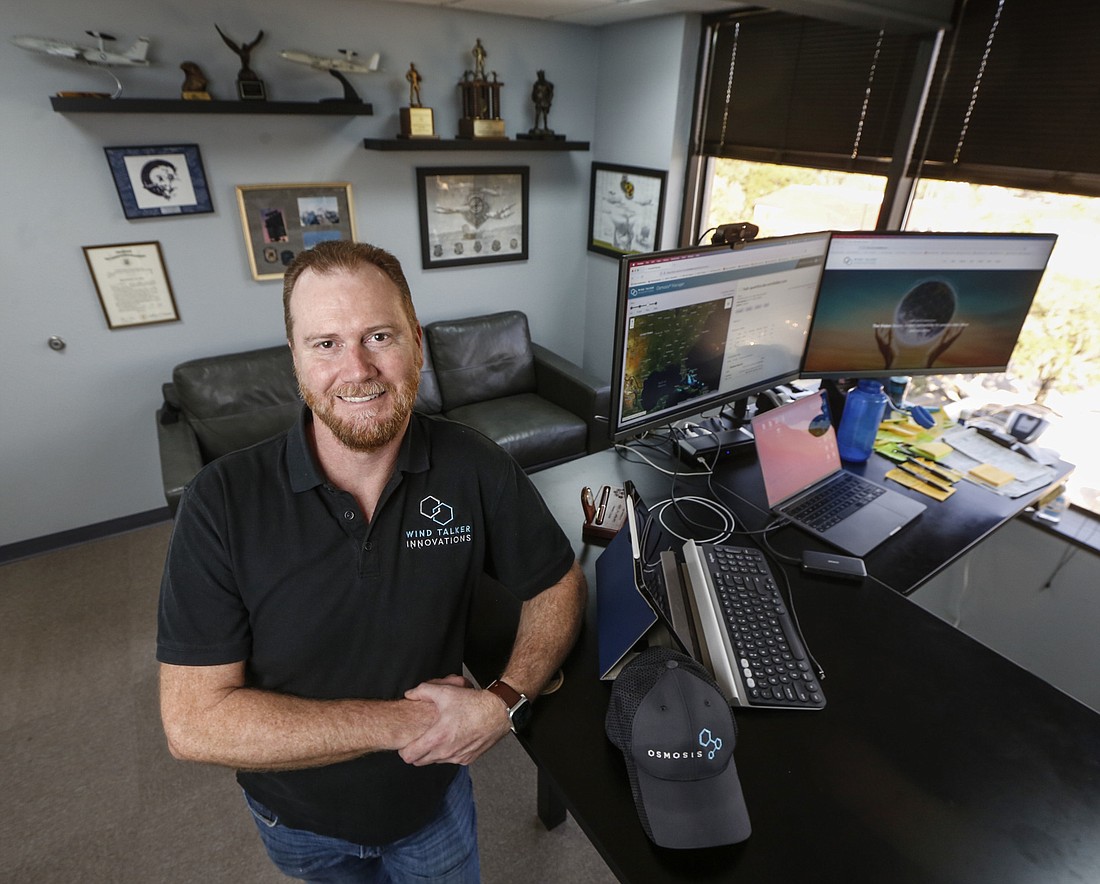- November 21, 2024
-
-
Loading

Loading

What if inexpensive software was commercially available that could enable seamless broadband internet access for devices otherwise without connectivity, even in remote locations beyond the reach of cell towers?
What if manufacturers installed that software into electronic products to “be the connective tissue” that “turns every device itself into infrastructure?”
What if? Lt. Col. Ryan Luther wondered just that as he ended a 20-plus year career in the U.S. Air Force. What if?
As an operations coordinator in Afghanistan and Iraq, Luther ensured the integrity of combat communications from a Boeing E-3 Sentry. He did that while integrating multiple autonomous weapons platforms into spontaneous wireless mesh networks to execute shifting battle plans.
If militaries and first-responders have battle-tested the connectivity and security of these device-to-device networks, what if — in a time of cyber-attacks, ransomware, data breaches, digital surveillance — what if there were affordable software apps that could offer similar capabilities for any device anywhere on the planet?
Luther and fellow Air Force veteran Matt Perdew asked that “what if” when they co-founded Wind Talker Innovations in 2016.
And in answering that question, they forged a market for their proprietary Osmosis software app. It allows smartphones, computers and tablets to directly communicate with each other and access the internet using high-bandwidth wireless mesh networks that bypass cell towers.
Less than six years later, Lakeland-based Wind Talker is on the verge of some major breakthroughs. It’s already been awarded several government contracts, including a $950 million-ceiling advanced battle management system contract by the U.S. Department of Defense. Now with 85 employees spread through offices in Anchorage, Alaska, Tacoma, Washington and Lakeland, it also has 14 approved patents and more than 200 patents pending across the government, education, transportation and drone sectors. And, notably, when Capital Ventures International invested in Wind Talker last year, it valued the business at $324 million.
All that put together is why, on an early-February Friday, Luther was preparing the 40 engineers in his Florida Avenue office in Lakeland for a boom in business — and transition from startup.
After six months of negotiations, “we’re going to finally close a contract with an OEM” (an original equipment manufacturer) to install Osmosis in its products, he says, noting the deal with a hardware manufacturer of 9,000 products marks “a transitional moment” for Wind Talker.
“This is when we go from a startup, from a focus on research and development, and are actually making a product, building logistics and sales,” says Luther, 49, a University of Florida graduate who, after retiring from the Air Force, could have chosen anywhere to base Wind Talker’s engineering hub, but chose Lakeland.
He and his wife are Winter Haven natives with family in the area but, “I wouldn’t be in Lakeland if it wasn’t a business decision,” he says.
Florida’s overall low taxes and local growth were lures, Luther says, but the city’s biggest asset is proximity to Lakeland Linder Airport, Florida Polytechnic University and Interstate 4’s rapidly developing high-tech corridor.
Wind Talker has “hired a few grads” and enrolls Florida Poly interns, he says, who work among MIT grads and former Google and Cisco engineers.
Access to Florida Polytechnic has given Wind Talker what Luther hopes is an opportunity to install Osmosis into “every mode of transportation” tested at its $42 million SunTrax autonomous vehicle and smart technologies center.
“That’s one of the things we are excited to get involved in,” he says. “The automotive industry is 30 years out of date. Cars have 12 or more sensors that are not communicating with other vehicles. Our goal is to be (installed) at the framework level to ensure safety for automated vehicles, for all forms of transportation.”
So, can Wind Talker get manufacturers to mass install its software into all automated vehicles?
It’s a big idea, but what if? Thinking big has paid off for Wind Talker before — a lesson learned after not thinking big enough nearly grounded the company in the cradle.
“Coming from an aviation background, my first thought was airborne networks,” Luther says. The company’s first endeavor was developing an “off-grid chat app” that took “a lot longer than expected” to design and found little traction by its targeted aviation consumer base.
“We were spending time and energy building an app to do something” that wasn’t needed, he says. That realization fostered “the first of a couple of pivots learned from those mistakes that made sure we focused on verticals and on integratives.”
By “productizing” software for “multiple verticals” rather than specialized use, Wind Talker now vies to be among pioneers in the wireless mesh network market.
To make it, the company must think big.
“That,” Luther says, “has been our biggest challenge — focusing in on how we move forward and not isolate ourselves in a single vertical.”